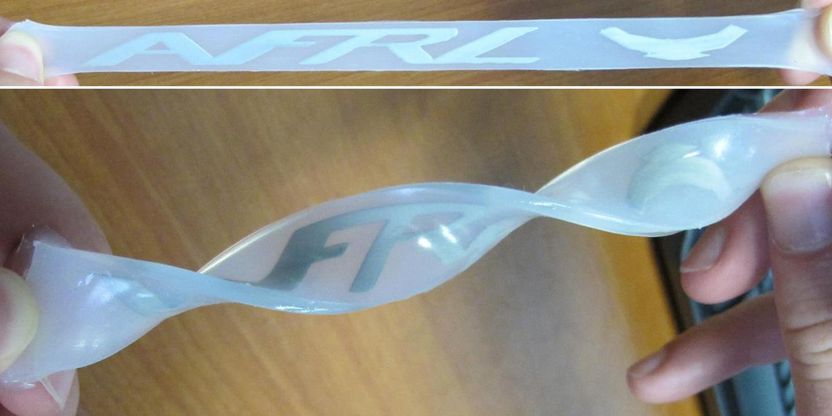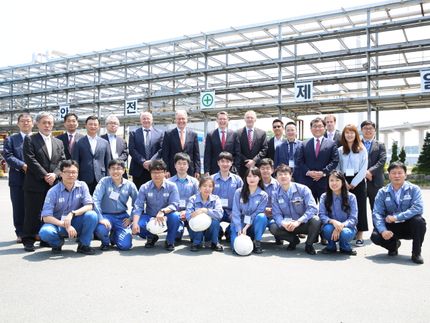A thin ribbon of flexible electronics can monitor health, infrastructure
A new world of flexible, bendable, even stretchable electronics is emerging from research labs to address a wide range of potentially game-changing uses. The common, rigid printed circuit board is slowly being replaced by a thin ribbon of resilient, high-performance electronics. Over the last few years, one team of chemists and materials scientists has begun exploring military applications in harsh environments for aircraft, explosive devices and even combatants themselves.

Benjamin Leever, Ph.D.
"Basically, we are using a hybrid technology that mixes traditional electronics with flexible, high-performance electronics and new 3-D printing technologies," says Benjamin J. Leever, Ph.D., who is at the Air Force Research Laboratory at Wright-Patterson Air Force Base. "In some cases, we incorporate 'inks,' which are based on metals, polymers and organic materials, to tie the system together electronically. With our technology, we can take a razor-thin silicon integrated circuit, a few hundred nanometers thick, and place it on a flexible, bendable or even foldable, plastic-like substrate material," he says.
To allow electronics to be bendable or stretchable or even change their configuration after fabrication, the Wright-Patterson team has turned to liquid gallium alloys as an electrical interconnect material, Leever says. "While these liquid alloys typically oxidize within minutes and become essentially useless," he says, "the team has been able to dramatically reduce the effects of the oxidation through the use of ionic species confined to the walls of microvascular channels within the flexible substrates."
The result is thin, foldable material that allows the circuitry to fit into extremely tight spaces and even to be integrated into complex curved surfaces, such as an airplane's wing, or even a person's skin.
In aircraft applications, Leever explains, the hybrid flexible system can be used to monitor stresses and strains and report this information through miniature embedded antennas to ground crews or a pilot. The researchers also are developing the same approach to monitor pilots' health. This involves a biosensor system that can measure heartbeat, hydration levels, sweat, temperature and other vital signs through miniature circuitry. The system would be embedded on a flexible, wearable patch and would include an antenna to transmit these biometric signals to the pilot or a ground team. The patch will "breathe," bend and stretch, and will provide real-time measurements of metrics that indicate fatigue or potential cognitive problems, Leever notes.
In the civilian world, Leever foresees use of flexible systems to monitor the conditions of bridges and other types of infrastructure in real time. He also points to medical applications, such as physical feedback for athletes as they exercise and real-time hospital monitoring for caregivers concerned about changes in a patient's vital signs. This type of monitoring dispenses with the need for the bulky electrodes and wiring that normally are associated with close medical surveillance.
Most read news
Other news from the department science

Get the chemical industry in your inbox
From now on, don't miss a thing: Our newsletter for the chemical industry, analytics, lab technology and process engineering brings you up to date every Tuesday and Thursday. The latest industry news, product highlights and innovations - compact and easy to understand in your inbox. Researched by us so you don't have to.




























































